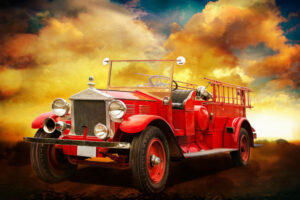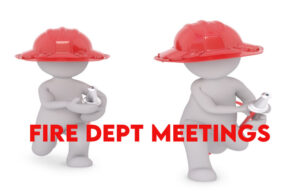A Blaze of Valor: Tracing the Historical Origins of Firefighters

Introduction: Safeguarding Communities Through Centuries
In the annals of history, few figures have exemplified courage, resilience, and selflessness as much as firefighters. The guardians of our cities and towns, these modern-day heroes have a rich and storied history that stretches back through the ages. From ancient civilizations to the organized fire departments of today, the evolution of firefighters is a testament to humanity’s constant pursuit of safety and communal well-being. Join us on a journey as we trace the historical origins of firefighters, exploring their remarkable transformation from primitive firefighting methods to the sophisticated emergency response systems we rely on today.
Ancient Roots: Firefighting in Early Civilizations
The origins of firefighting can be found in the earliest human settlements. Ancient civilizations, recognizing the potential destruction of uncontrolled fires, developed rudimentary techniques to combat this formidable force. In ancient Egypt, records depict a primitive bucket brigade system where citizens would pass water-filled containers to extinguish fires. Similarly, ancient Rome had a rudimentary form of firefighting, with citizens forming chains to pass buckets of water to douse flames.
One of the most notable examples of ancient firefighting techniques can be found in the Roman Empire. Emperor Augustus established a group known as the “watchmen,” whose responsibilities included patrolling the city for fires and sounding an alarm if one was spotted. This early form of organized firefighting marked a pivotal step in the evolution of firefighting as a communal endeavor.
The Middle Ages: Guilds and Fire Wardens
As societies evolved, so did their approaches to firefighting. During the Middle Ages, European cities began forming guilds or brotherhoods that focused on fire prevention and response. These groups were often comprised of skilled craftsmen who understood the intricacies of urban fires. The guilds created fire codes, inspected buildings for fire hazards, and established protocols for handling fire emergencies.
In London, the Great Fire of 1666 served as a turning point. The fire’s devastation prompted the establishment of the first professional firefighting organization, which became the foundation for modern fire departments. This event highlighted the need for dedicated individuals trained to handle emergencies efficiently and effectively.
The Industrial Revolution: Technological Advancements and Urban Challenges
The advent of the Industrial Revolution brought about technological advancements that revolutionized firefighting. Hand-pumped fire engines and steam-powered fire pumps allowed firefighters to deliver water more effectively to the heart of a blaze. These innovations significantly improved firefighting capabilities and paved the way for the establishment of formal fire departments.
The expansion of cities during this era brought about new challenges. Rapid urbanization led to overcrowding and the construction of buildings with little regard for fire safety. This necessitated the creation of fire departments with trained personnel who could respond to emergencies swiftly. Volunteer fire companies began forming across Europe and North America, with members committed to safeguarding their communities from the threat of fire.
From Horses to Hydraulics: The Modern Firefighting Era
The late 19th and early 20th centuries marked a period of remarkable innovation in firefighting technology. The introduction of horse-drawn fire engines increased the speed at which firefighters could reach the scene of a fire. These engines were equipped with hoses and pumps that could deliver a more substantial amount of water, further enhancing firefighting efforts.
The transition from horse-drawn to motorized fire engines streamlined response times even further. The introduction of internal combustion engines and hydraulic systems allowed firefighters to pump water more efficiently, giving them an upper hand in battling flames. Additionally, protective gear such as fire-resistant clothing and self-contained breathing apparatuses became standard, ensuring the safety of firefighters on the frontlines.
The Modern Fire Department: Highly Trained Professionals
Today’s fire departments are a far cry from the bucket brigades of ancient civilizations. The modern firefighter is a highly trained professional equipped with a diverse set of skills. Fire departments are not only equipped to combat fires but also handle hazardous materials incidents, medical emergencies, technical rescues, and more.
The emphasis on prevention has also become a cornerstone of modern firefighting. Fire inspectors work to ensure buildings adhere to safety codes, and public education campaigns aim to raise awareness about fire hazards and safety practices. Firefighters have become integral members of their communities, often participating in educational programs, community events, and disaster response efforts.
Conclusion: Honoring a Storied Legacy
The historical origins of firefighters trace a remarkable journey of adaptation and innovation. From the bucket brigades of ancient times to the sophisticated fire departments of today, the evolution of firefighting reflects humanity’s unwavering commitment to protecting lives, property, and communities from the destructive force of fire. As we honor the courage and dedication of modern firefighters, let us also pay homage to the generations that came before, who, through their ingenuity and perseverance, laid the foundation for the heroic figures we admire today.





